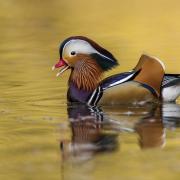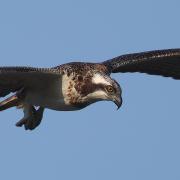As Herculean efforts go, the following challenge is up there with mucking out the stables of King Augeas or wrestling the Erymanthian boar.
If you were to line up every mammal on earth - not a representative of every mammal species, but every individual warm-blooded, lactating, placenta-forming animal currently on this planet - then every fourth creature in this illustrious roll call, would be a bat. That’s how numerous they are on a global scale, and yet here in our mild temperate climate, we have a small handful of species and most of them are perilously rare.
So, we place bats in a special protected status and give them and their roosts legal protection. And so we should.
Bats are amazing creatures, in terms of developing a life strategy to survive, they have chosen perhaps the most difficult set of conditions to live within. If we focus solely on the species to be found here in Devon, they fly, at night, catching small insects, and get around by hearing the shape of the world around them. For us daytime mammals, propelling ourselves forward with bipedal action and using sight as our predominant sense, it is a world totally alien to us.
When I used to introduce school children to bat ecology, we would start the session in a nice large area of open space.
‘Run around as fast as you can, everyone!’ was my first instruction, which always induced nervous sweats in the teacher.
‘Right, now shout as loud as you can while you keep on running around.’ This command was always met with delight and total compliance.
‘Now, shut your eyes and try not to bump into each other by listening for the echos of your shouting, while avoiding everyone else's shouts.’
And chaos would ensue.
We casually throw out the comment that bats ‘see’ the world around them using echo location. But the physiological reality of this incredible super sense is mind blowing. A pipistrelle bat will navigate along well-known flight corridors using clicks with a pause in between. The click is delivered at huge volume which would damage its own ears, so each time it clicks it simultaneously closes its ears to protect itself, causing it to become momentarily blind. The result can be thought of as seeing a room lit by a slow strobe light, presenting static images which change between each but do not move in and of themselves. As our pip hones-in on its midge prey, so the regularity of the clicks increases, producing more static frames until it is so rapid that the scene is effectively in motion to its ears. And remember, each time that bat clicks, it has to shut off its ears!
Switch on a bat detector in a good pipistrelle foraging location and you will hear the slow clicks increasing as the prey nears, and it sounds for all the world like the bats are blowing raspberries.
One of our rarest bats here in the UK and a species with a handful of strongholds here in Devon, is the greater horseshoe bat. This is the guy who hangs upside down from the ceiling of a cave, wrapped in its wings. It’s a bat from the pages of a Victorian gothic novel. They don't echolocate in the same way as our pipistrelle, these guys have a convoluted nasal lobe through which a call is emitted that, on a standard bat detector, sounds like a bird song. They snort out their ultrasonic call and have small wedge-shaped ears to pick up the resulting echo. They are a large bat and are frequently compared to the size of a pear when hanging in the roost.
Bats, as we’ve established, are mammals which means they give birth to live young. Not an easy proposition for a nocturnal flying animal which hangs out in caves. Greater horseshoe bats form large colonies and, in the summer months, maternity roosts of pregnant females start to build in specific locations. Each female will have a single pup in its uterus and it is born in June or July, the size of a bumblebee, whilst the female hangs upside down, catching the tiny baby in its wings. The pup is encouraged to fix on to a nipple, which for bats are located on the chest. Rich bat milk fuels a fast development of the pup where it can be weaned after about 45 days. For the first couple of weeks however, the pup must stay with its mother at all times, which means mum has to fly to feed herself, carrying a little baby on her person.
While the lactiferous nipples are located on the chest, aerodynamics demands that the baby travels backwards through the night sky and so greater horseshoe bats have developed two ‘false nipples’ in their groin, to which the pup holds on with its teeth for grim death as the female takes off on her nightly commute.
So, our initial challenge to line up every living mammal on earth seemed huge, but I would suggest it’s not half as challenging as simply being a bat!



























